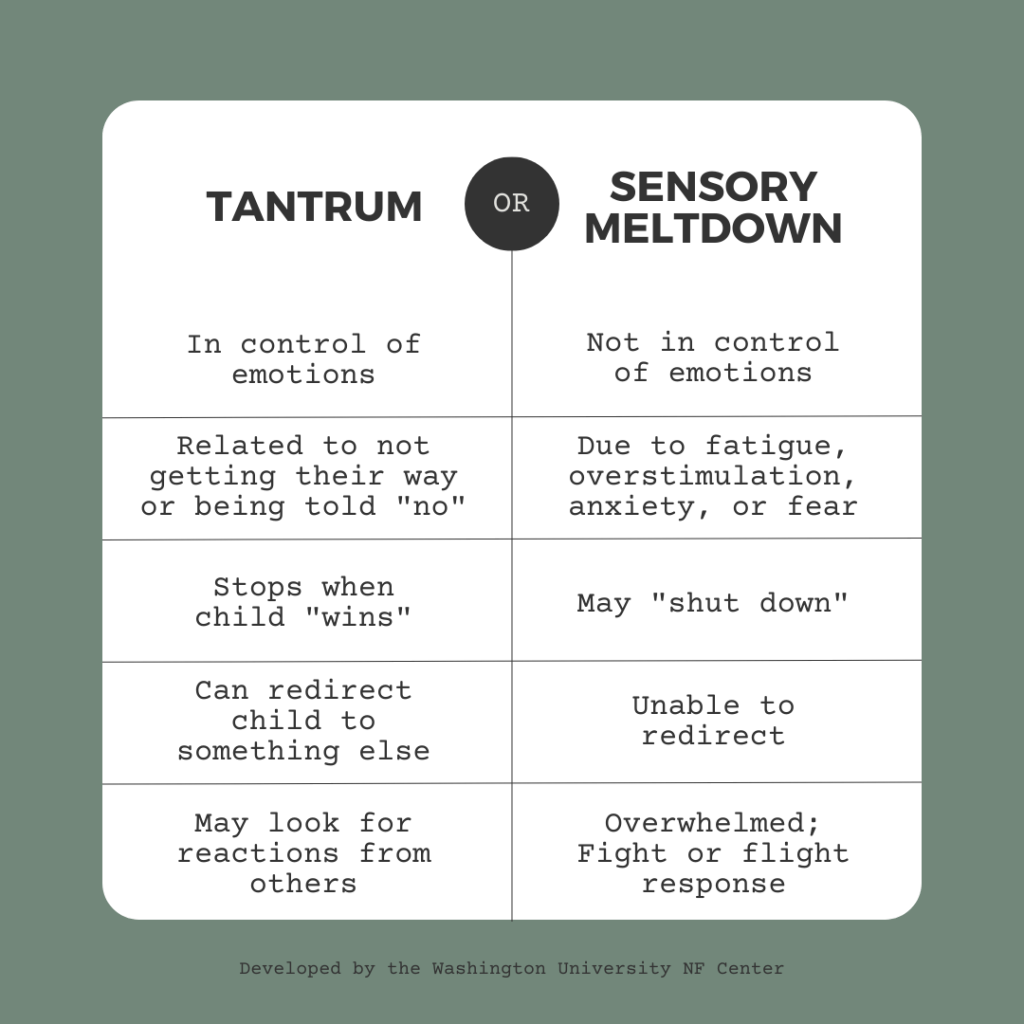Tantrums and sensory meltdowns may sound similar, but they are vastly different. Knowing the difference between the two can help you decide how to intervene when your child is having an emotional behavior/outburst.
A tantrum is a controlled behavioral response to not getting something a child wants. A sensory meltdown is an uncontrolled triggered response that occurs when a child is overstimulated by a thought or something in their environment.

Children with NF1 may experience more sensory meltdowns than those who do not have NF1.
Children of all ages typically experience tantrums and sensory meltdowns at some point or another. However, children with neurofibromatosis type 1 (NF1) may experience more sensory meltdowns than those who do not have NF1. This is due to having a difficult time processing sensory input from the environment (please see previous blog post, “The ‘Sixth’ Sense” for more information).
Due to the inherent differences between tantrums and sensory meltdowns, parental responses must also be different. Examples of ways to address a tantrum include:
- Acknowledge what they are feeling. (“I see that you are upset because you are not ready to leave yet.”)
- After acknowledging how they feel, stand firm on your answer. (“I see that you are upset because you are not ready to leave yet, but it is time to leave.”)
- If you think that a tantrum is brewing, try to redirect your child to something else.
- Always model the behavior that you want them to express.
- Sometimes tantrums are unavoidable. Once a tantrum settles, encourage your child to talk about their emotions and what could have been done differently.
- If your child becomes violent, provide an appropriate punishment (this is something you as a parent must decide).
Examples of ways to address a sensory meltdown include:
- Comfort them
- Locate a calm quiet place for them to relax
- Have your child mimic you taking deep breaths
- Reassure them that everything is okay; DO NOT punish.
Despite the differences between a tantrum and a sensory meltdown, one thing remains the same for both: As a parent, you must try to remain calm.
Despite the differences between a tantrum and a sensory meltdown, one thing remains the same for both: As a parent, you must try to remain calm. This is often easier said than done, but most of the time it will lead to a better resolution.
